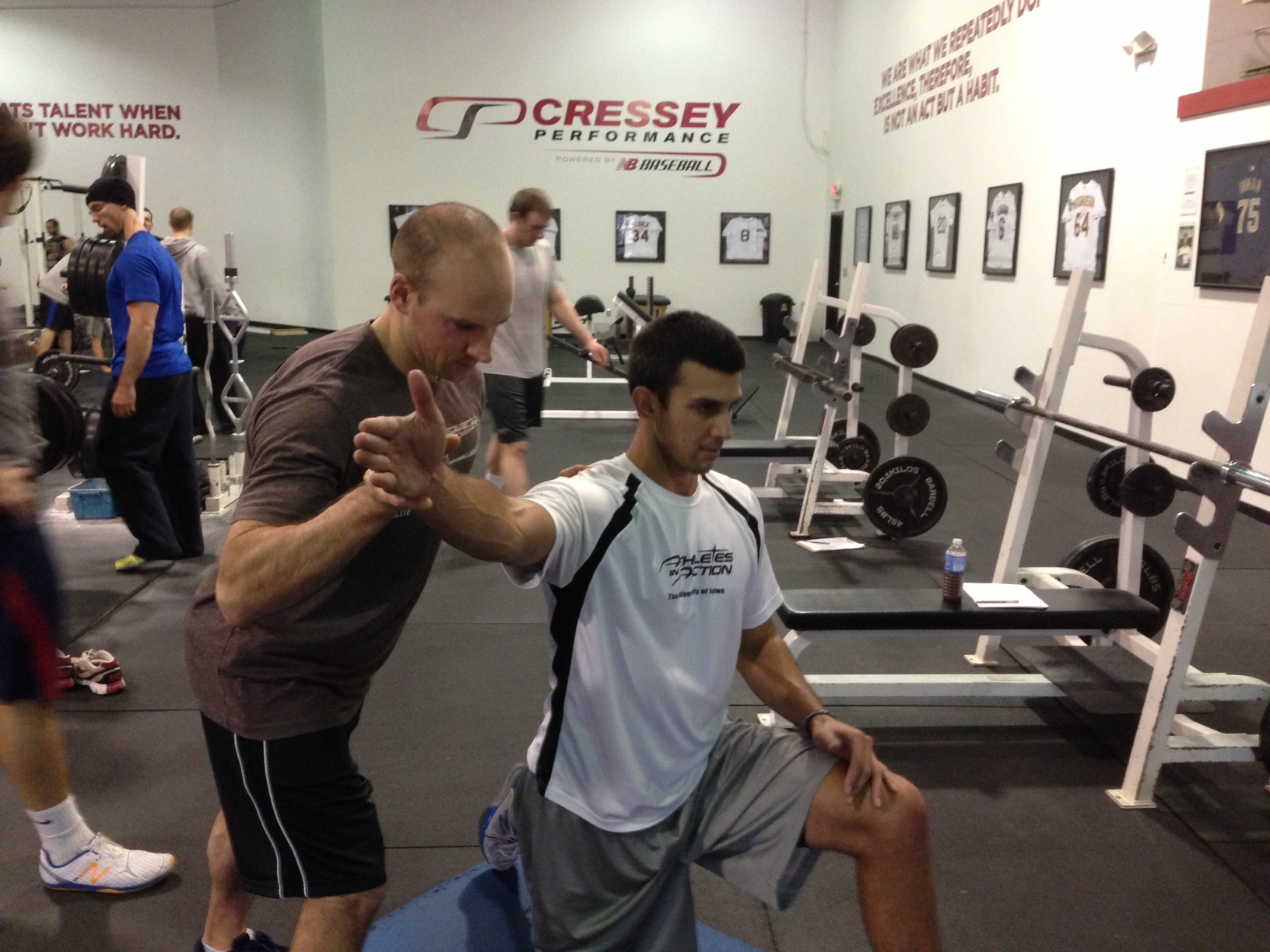
5 Things that Might Surprise You about our Baseball Strength and Conditioning Programs
We have quite a few baseball coaches, athletic trainers, physical therapists, and strength and conditioning coaches who stop by Cressey Sports Performance to observe our training. While they are the ones visiting to learn, I actually learn quite a bit about the “norms” in the baseball strength and conditioning field by listening to them tell me about what surprises them about what they observe at CSP. Here are some of the areas that seem to surprise quite a few people:
1. They’re surprised we don’t do more sprint work and change-of-direction training.
The competitive baseball season essentially runs from mid-February all the way through early September, and during that time, guys are sprinting, diving, and changing directions constantly during fielding practice. They’re also on their feet in cleats for an absurd number of hours each day. To that end, when the off-season rolls around, most guys want a few weeks away from aggressive sprinting and change-of-direction work. Once they get their rest, we typically go to 2-3 movement training sessions for October through December, usually on off-days from strength training. I prefer to break them up so that we can get more quality work in with our strength training program, and also so that the sessions don’t run too long. Once January 1 rolls around, the volume and intensity of sprinting increases, while the strength training program volume is reduced.
Summarily, because we often separate our sprint/agility work from our resistance training, many folks get the impression that we don’t do much movement training – but that couldn’t be further from the truth. It’s a big part of our comprehensive approach to baseball development; we just fit it in a bit differently than most coaches, and emphasize or de-emphasize it at different point in the year.
2. They’re surprised how much medicine ball work we do.
One of the reasons there is a bit less movement training than you might see in other strength and conditioning programs is that we do a ton of medicine ball work, particularly during the months of October through January (for our pro guys).
Medicine ball drills are great for not only training power outside the sagittal plane, but also because it helps to iron out excessive asymmetries while maintaining pitching- and hitting-specific mobility. Our guys may do 240-360 medicine ball throws per week during their highest volume phases.
You can learn more about the medicine ball exercises we incorporate in our program by checking out Functional Stability Training of the Core.
3. They’re surprised that we don’t Olympic lift our baseball guys.
On multiple occasions, I’ve written at length about why I don’t like overhead pressing and Olympic lifts in light of the unique demands of throwing and the crazy adaptations we see in throwers.
While the Olympic lifts might have great power development carryover to the sprinting one encounters on a baseball field, the carryover to power in the frontal and transverse planes just isn’t as pronounced. In other words, power development is extremely plane-specific. I’ll take medicine ball work and non-sagittal plane jumping exercises over O-lifts for baseball players in a heartbeat.
4. They’re surprised we don’t do more band work.
It’s not that I think bands are useless; I just think most guys use them incorrectly, and even when used correctly, they just don’t really offer that much advantage other than convenience.
The fundamental issue with bands is that the resistance is generally so light that guys can quickly develop bad habits – poor humeral head control, lumbar hyperextension, etc. – while doing them. They’d be much more effective if guys would just slow down and use them correctly. I am also not a fan at all of using the bands to get the arms into all sorts of extreme positions; you’re just using a passive implement to create more laxity in an already unstable shoulder. If you want (and need) to stretch a shoulder, do so with the scapula stabilized.
Additionally, I’ll take cables over bands whenever possible simply because the resistance is heavier and it matches the strength curve for external rotations better. Throwers are generally weakest at full external rotation, yet the band has the highest tension in this position; meanwhile, the cable’s resistance remains constant. Obviously, manual resistance is ideal, but bands are a distance third.
5. They’re surprised how “aggressive” our throwing programs are.
The overwhelming majority of our guys long toss, and most of them throw weighted baseballs at certain points of the year as well. They pitch less and throw more. They all still get their 2-3 months off from throwing each year, but when they are throwing, they work hard.
This is in stark contrast to some of the throwing models I’ve seen in professional baseball, where many organizations limit players to 90-120 feet with their long tossing, and the only time a baseball is “weighted” is when it gets wet on a rainy day. Guys take so much time off that they never have any time in the off-season to actually develop. I firmly believe that while you have to have strict limits on how you manage pitchers, you also have to stop short of completely coddling them.
These are surely just five areas in which we deviate from the norm with respect to baseball development, but important ones nonetheless.



